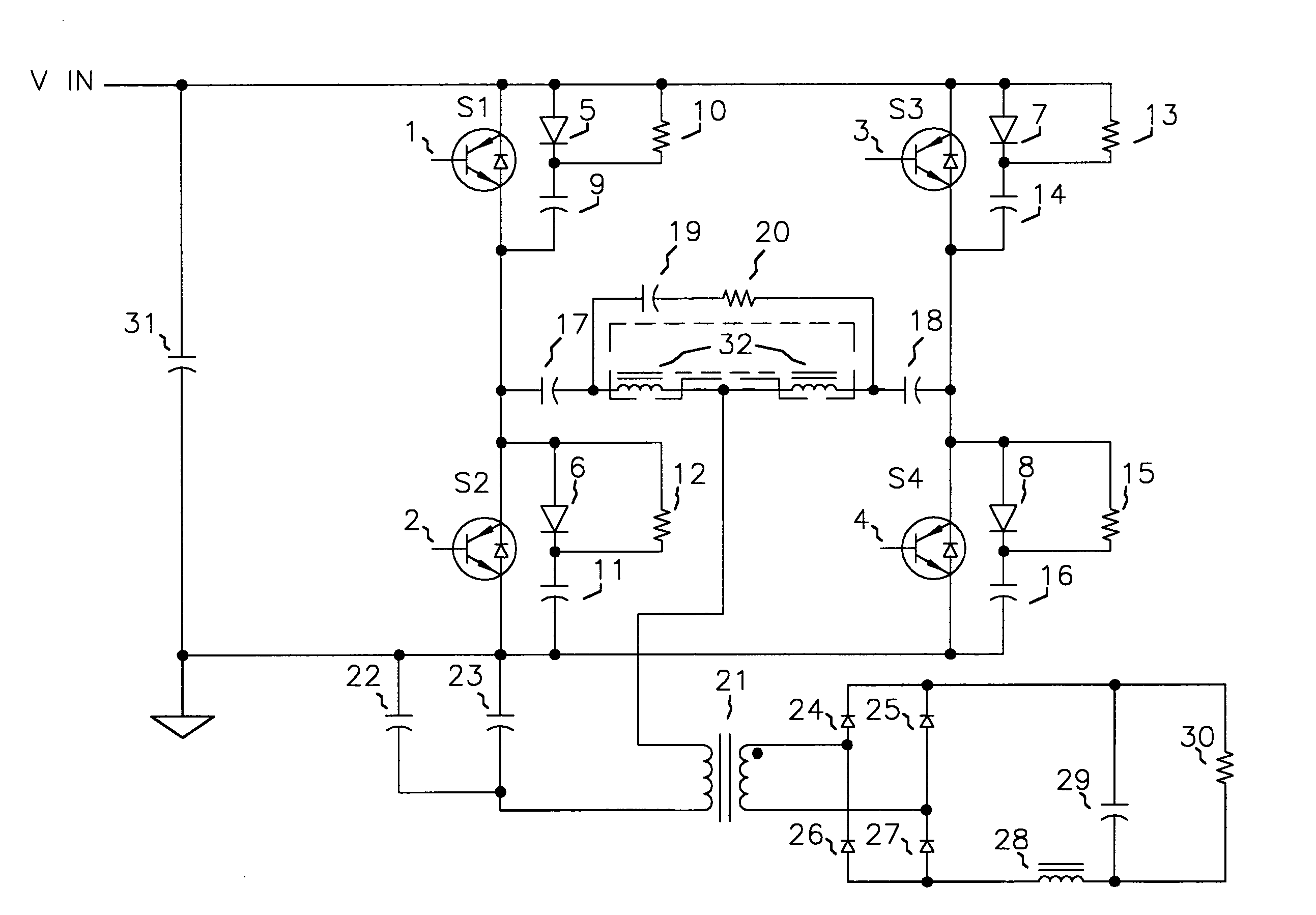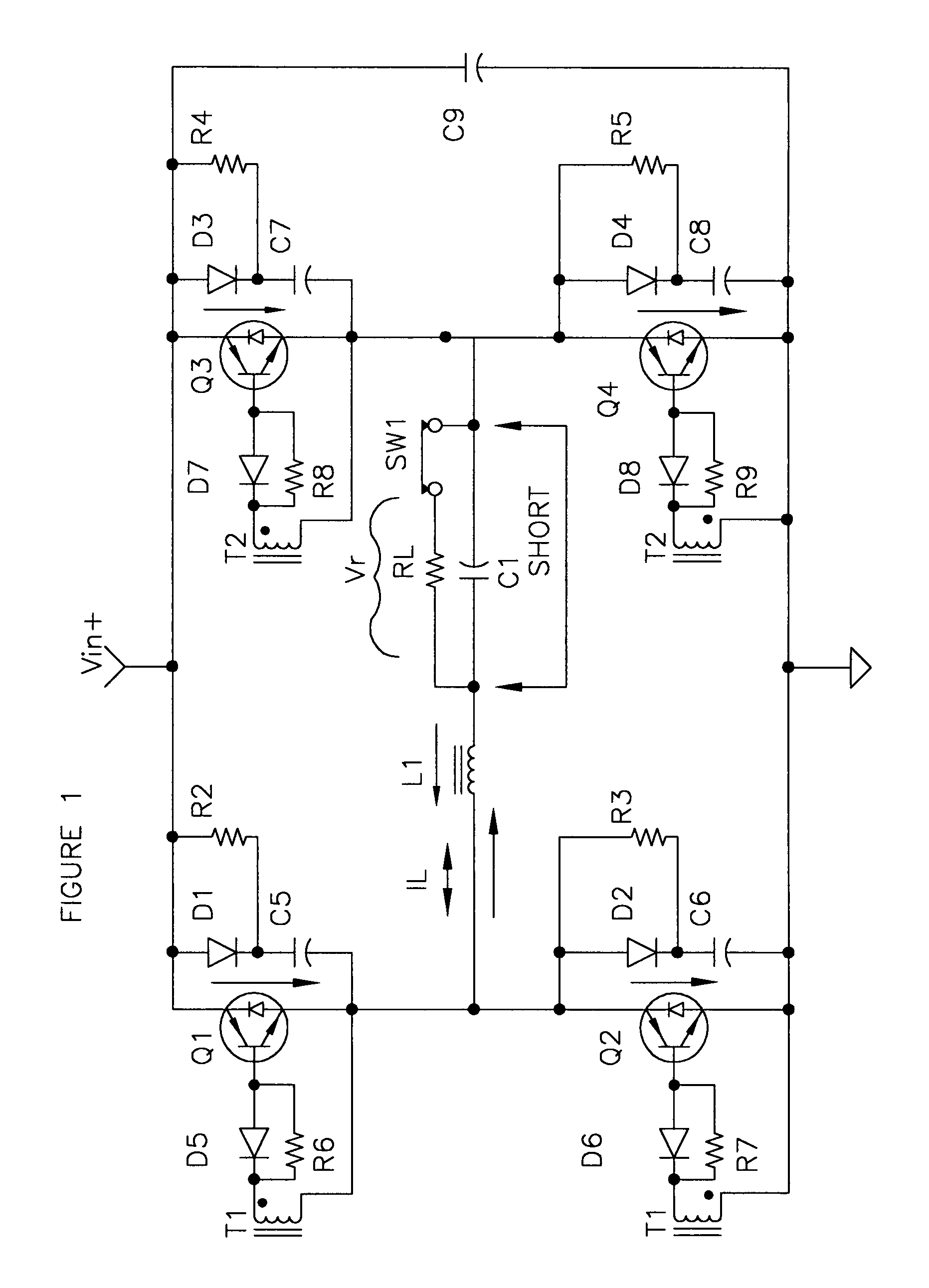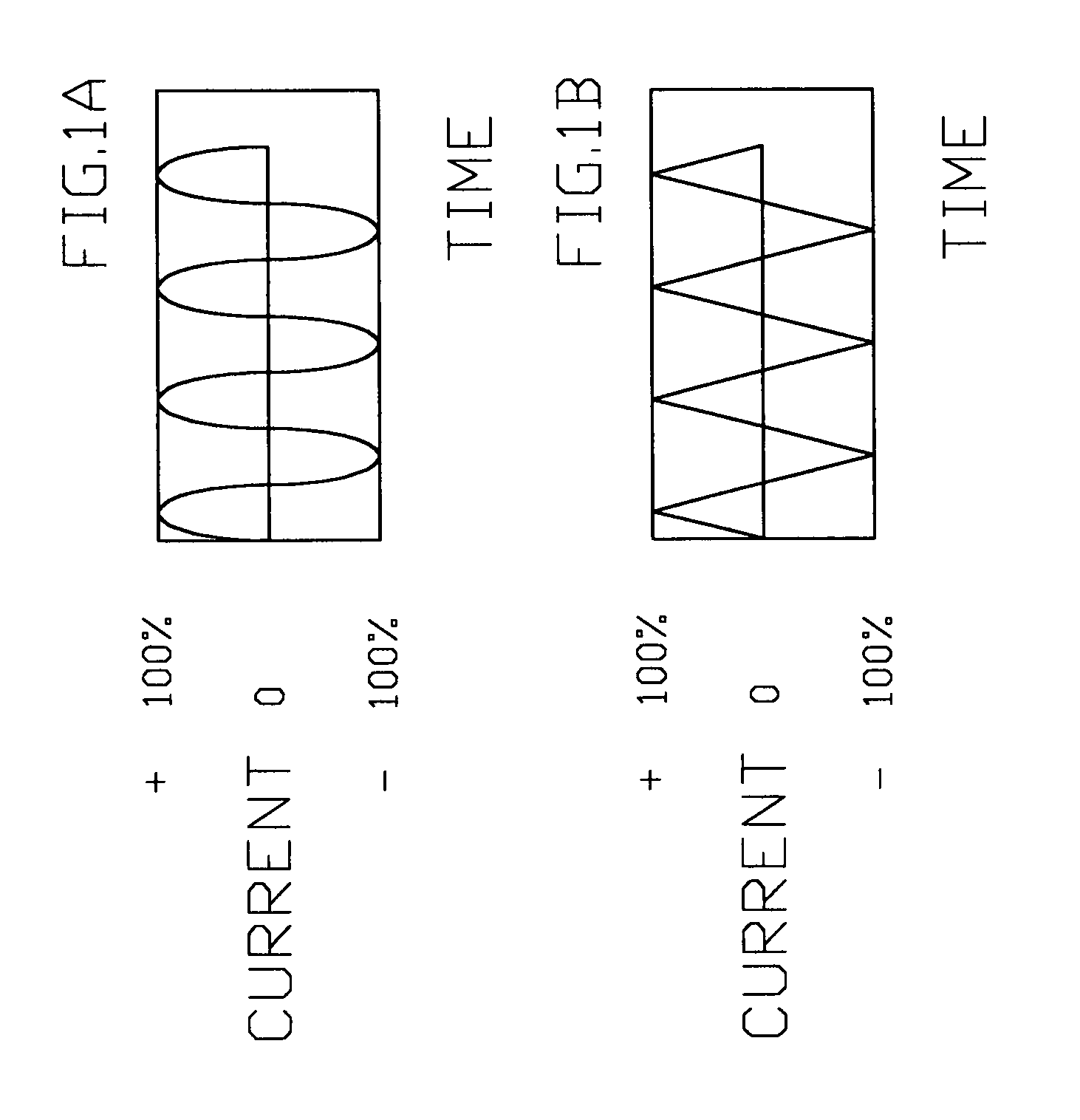Phase shifted H-Bridge resonant converter with symmetrical currents
a phase shift and symmetrical current technology, applied in the field of design, can solve the problems of not producing symmetrical currents, limiting peak currents, and circuits that have not shown to correct, and achieve the effect of reducing the power requirement of ac load circuits
- Summary
- Abstract
- Description
- Claims
- Application Information
AI Technical Summary
Benefits of technology
Problems solved by technology
Method used
Image
Examples
Embodiment Construction
[0019]While specific embodiments of the invention have been shown and described in detail to illustrate the specific application of the principals of the invention, it will be understood that the invention may be embodied as fully described in the claims, or as otherwise understood by those skilled in the art, without departing from such principals.
[0020]FIG. 1 is a circuit diagram of a parallel loaded H-Bridge resonant converter according to prior art. RL represents a load, which is equivalent to a transformer rectifier output. The converter operates at a constant switching frequency and is controlled by gate signals applied to Q1-Q4. As seen in the figure, the resonant tank circuit is comprised of L1, C1, and R1. “SW1” represents an open or a shorted load condition across C1. An input DC voltage, V+ is converted to an output voltage Vr and output current Ir, which in turn is applied to RL.
[0021]FIG. 1A is the current IL through RL under normal load conditions, with SW1 closed. The...
PUM
 Login to View More
Login to View More Abstract
Description
Claims
Application Information
 Login to View More
Login to View More - R&D
- Intellectual Property
- Life Sciences
- Materials
- Tech Scout
- Unparalleled Data Quality
- Higher Quality Content
- 60% Fewer Hallucinations
Browse by: Latest US Patents, China's latest patents, Technical Efficacy Thesaurus, Application Domain, Technology Topic, Popular Technical Reports.
© 2025 PatSnap. All rights reserved.Legal|Privacy policy|Modern Slavery Act Transparency Statement|Sitemap|About US| Contact US: help@patsnap.com



